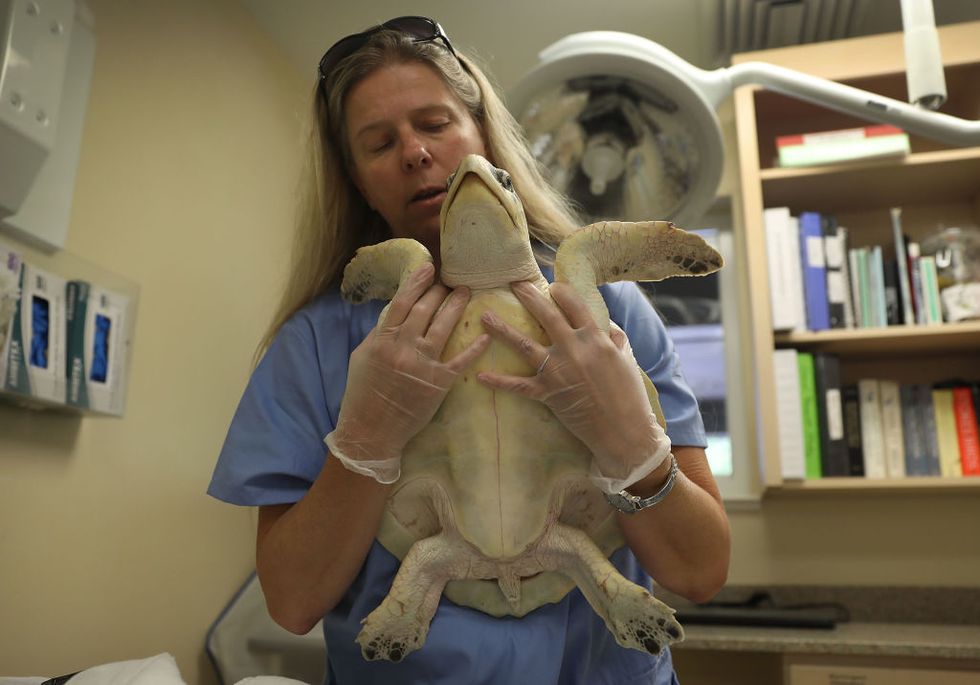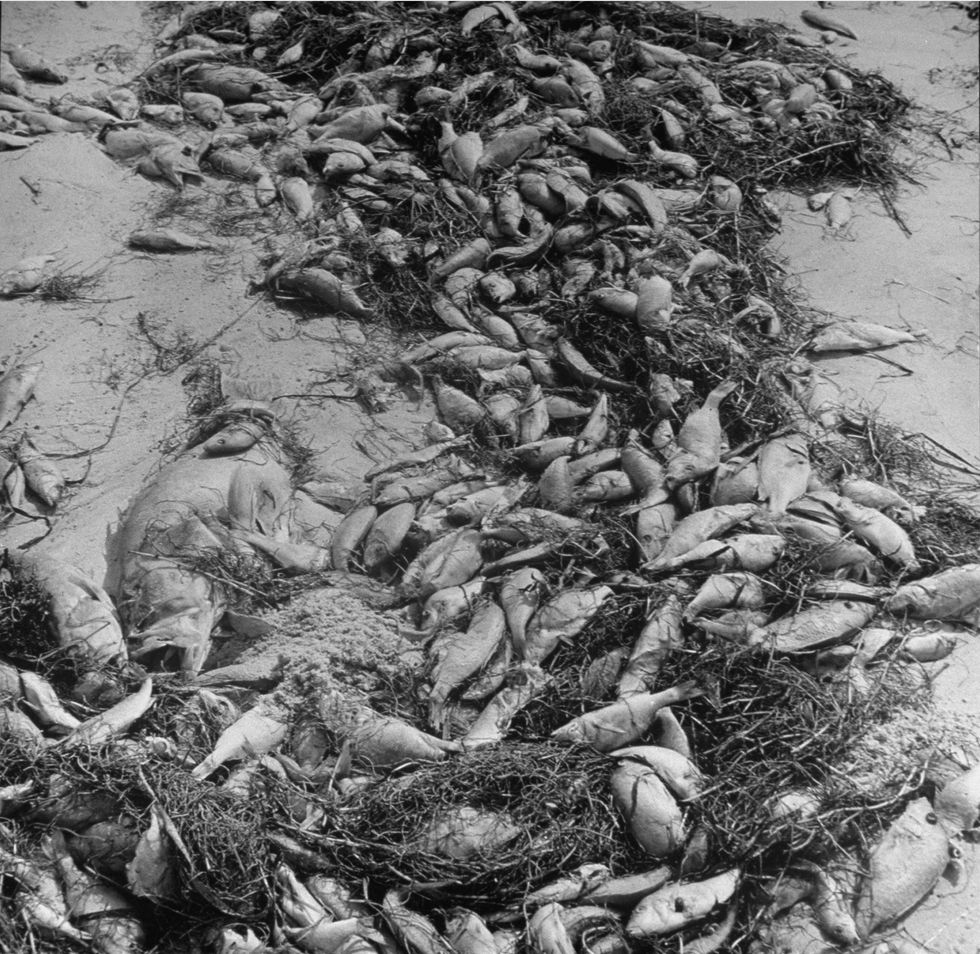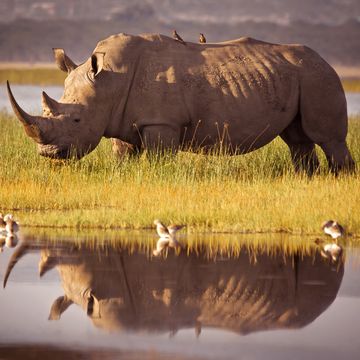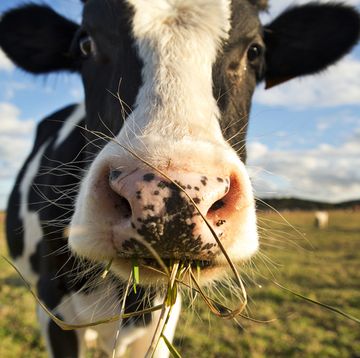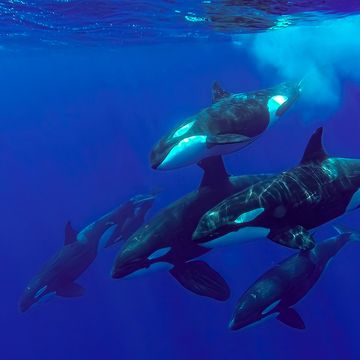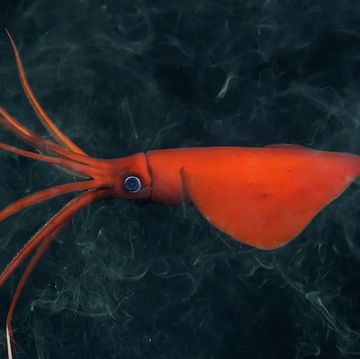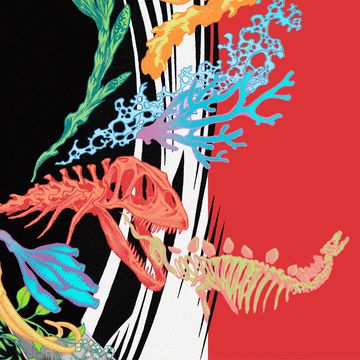A harmful red tide has forced Florida to declare a state of emergency throughout the Gulf of Mexico, in an area spreading 150 miles up and down the state. The red tide has killed more than five tons of fish and has become a dolphin-killing epidemic.
Florida wildlife experts estimate around 200 sea turtles have been killed, too. For humans, red tide has made it dangerous to be even near the beach. People are suffering irritation to the eyes and mouth, which, for those with asthma, represents a serious health risk.
What's behind the problems? In a word, algae.
The Bad Kind of Bloom
Red tides are algae blooms, a sudden and rapid accumulation of algae in a water system. Specifically, they're known as a harmful algae blooms, or HABs. HABs can happen in just about any body of water. All they need is an excessive amount of nutrients.
There are two main types of HABs, most commonly differentiated by color: There are red tides, and also blooms of blue-green algae. Blue-green HABs are made up of cyanobacteria and mainly appear in freshwater rivers or lakes. They're deadly for animals, and eventually they can reach levels beyond what water treatment plants can sort out. That's what happened in Toledo, Ohio, in 2014 when a HAB left the entire city of 500,000 without clean drinking water.
Red tides are caused by a type of unicellular algae known as a dinoflagellate. In Florida, the culprit is a specific dinoflagellate known as Karenia brevis, or K. brevis, which produces 12 neurotoxins that can kill marine animals including fish, turtles, sea birds, manatees, and dolphins. The nicest thing one can say about K. brevis is that it is named in honor of Karen Steidinger, a renown expert who studied the harmful dinoflagellate for 40 years.
A Long History—But Not Like This
K. brevis is native to the Gulf of Mexico. As early as the 15th century, as the Spanish began to explore and colonize the region, they would take note of sudden fish kills that would have been caused by red tides. When interacting with native tribes in the region such as the Calusa, the Spanish learned that these people had an understanding of the problem, and that shellfish could become poisonous through what scientists suspect were red tides. Modern major fish kills caused by red tides were first identified back in 1844.
Typically, K. brevis blooms are most likely to occur in the fall, but as this summer's episode shows, they favor no particular season. They also occur sporadically, some years not coming at all.
Florida's red tide algae feast on a variety of nutrients, some natural and others man-made. They include Trichodesmium, more commonly known as sea sawdust, decaying fish and picoplankton, tiny life forms that K. brevis consumes.
The problem may be getting worse. A study from 2007 showed that "K. brevis was approximately 13-18-fold more abundant in 1994-2002 than in 1954-1963.""We know of no natural sources of nutrients that have increased 13-18-fold," the study says. "The most plausible hypothesis for a large increase in nutrient availability is that the large increase in human activities in South Florida is involved."
Take fertilizer for example. When this nutrient-rich material gets washed out to the sea through runoff, it becomes a feast for K. brevis. Considering the massive development Florida, along with the rest country, has undergone in the last 50 years, it's no surprise more fertilizer is making its way into the ocean.
What the Future Holds
There are a growing number of studies looking at connections between K. brevis and climate change, too, because rising ocean temperatures are directly related to a number of the issues stated above: warmer water is likely to kill off more fish, for example, giving K. brevis more nutrients to feed on. However, a lack of data means scientists are not ready to definitively say climate change is increasing red tides.
However, human life is more than just pumping carbon dioxide into the world. For some scientists in Florida struggling with the current red tide, like Rick Bartleson of the Sanibel-Captiva Conservation Foundation, there's clearly more to the current red tide than naturally occurring nutrients.
“There are other factors that had to work together [to create] this perfect storm for the developing red tide population," he tells The Guardian. "It’s obvious that you can’t have dense blooms like this, and long lasting blooms, without having a high nutrient supply rate to the algae.”
David Grossman is a staff writer for PopularMechanics.com. He's previously written for The Verge, Rolling Stone, The New Republic and several other publications. He's based out of Brooklyn.

